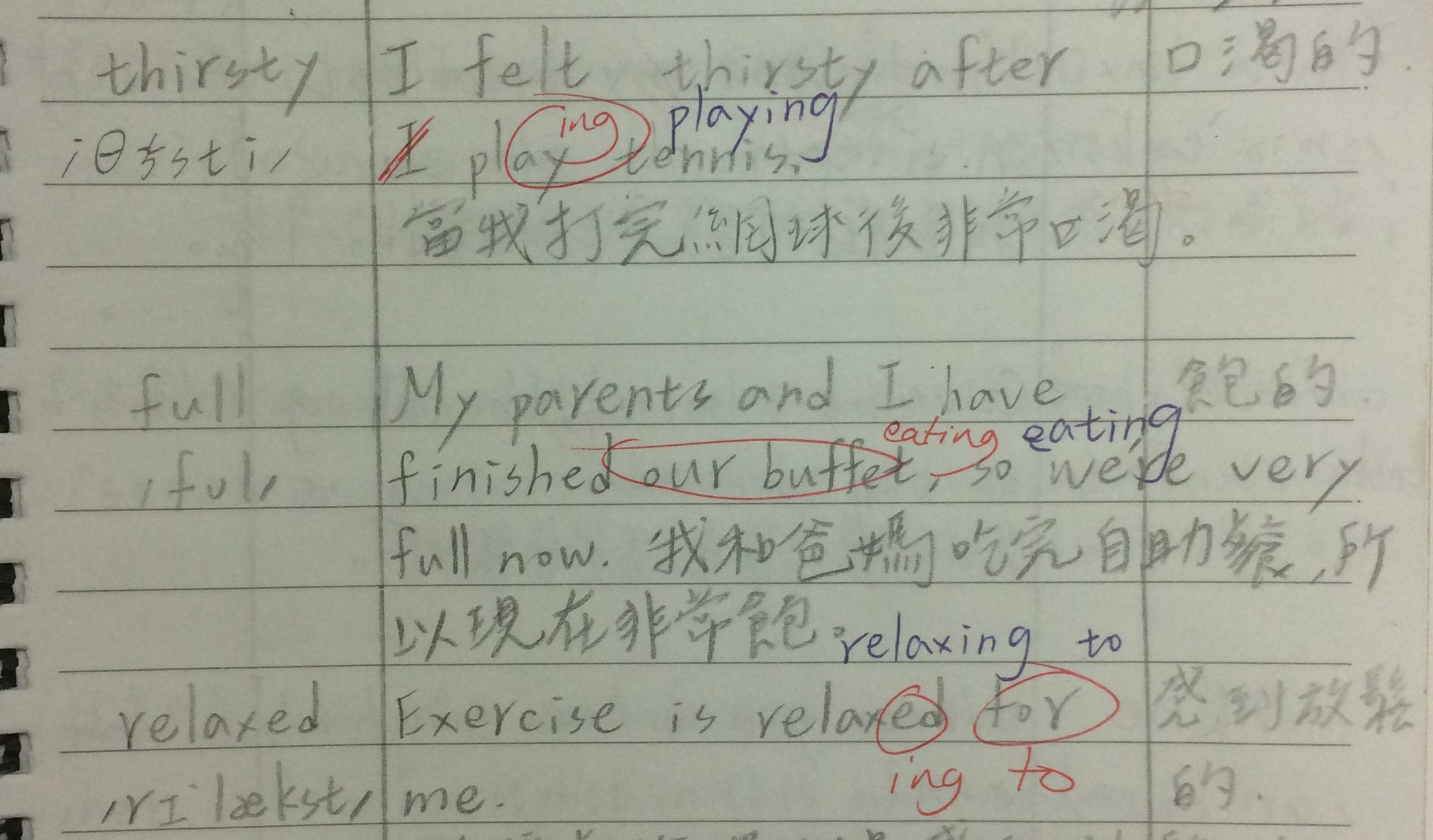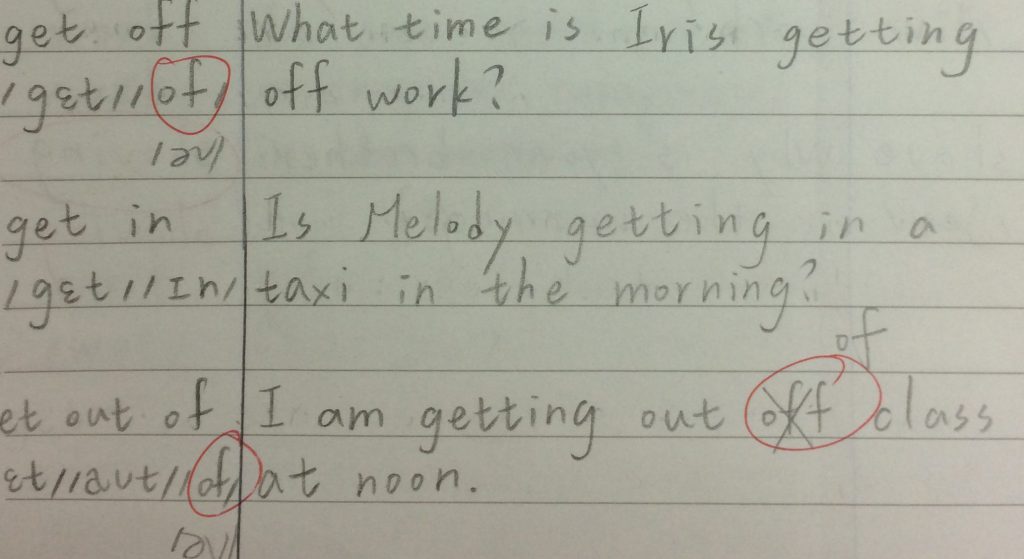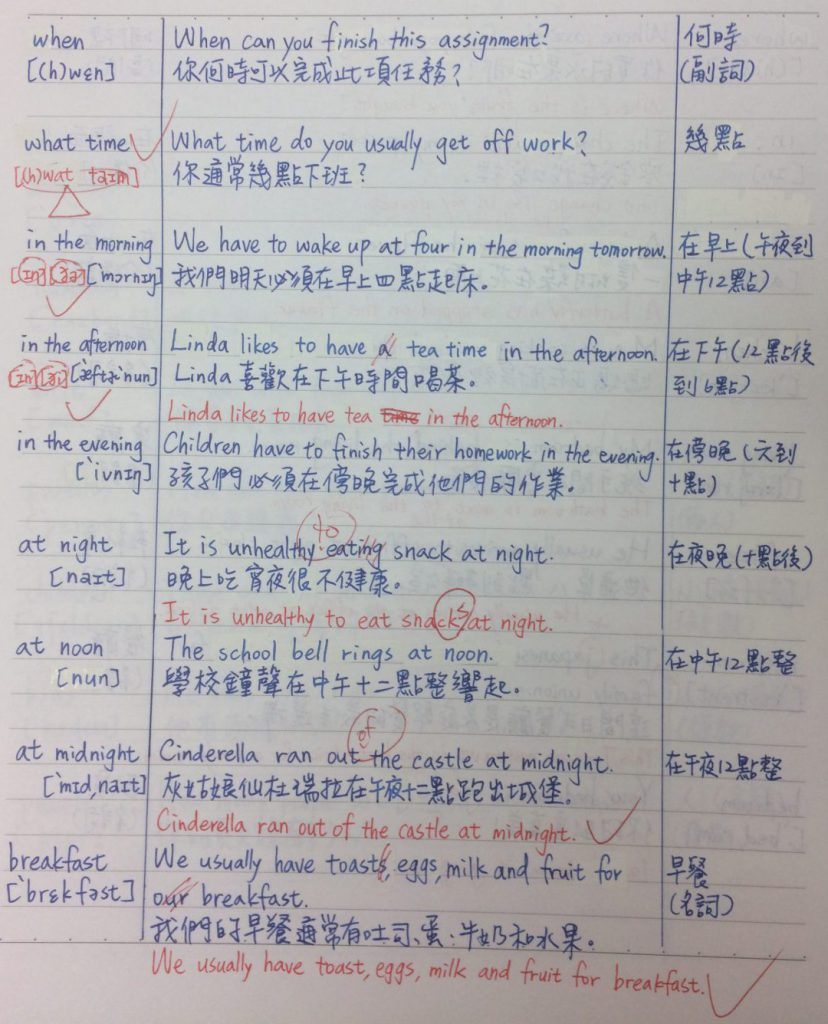
Learning vocabulary is a tedious, but necessary, part of learning a language.
The belief used to be that just 3000 words was all you needed to adequately understand most things you read in English. But recent research suggests that the number is closer to 8000, with some estimates going as high as 12,500 words for a 95% comprehension rate!
Given this new research, it baffles me why Taiwan would reduce the vocabulary requirements for high school students, as they have recently done. The article referenced says that the goal is to reduce “mere rote memorization of words” and allow more time for “speaking[,] listening and reading comprehension.” But how do you develop these skills without the basic vocabulary to do so?
The solution is obvious – teach students a better way to learn! Rote memorization of words is not much more effective than “learning by osmosis”! Yet this is the technique used by every student I’ve met.

Almost everyone studies vocabulary incorrectly (or, at least, inefficiently,) but Teacher Sammy tries to help with one item of homework. (Note that I said “help”, not “provide a solution”. The full solution is to completely change study methods, but that’s a complicated subject for another time.)
Each of Teacher Sammy’s lessons has vocabulary associated with it. In class, Sammy reviews the vocabulary for the lesson and discusses likely issues with pronunciation, understanding, and usage. A portion of these words she designates for sentence-making homework.
The homework involves writing down the English word or phrase, its simple dictionary translation, its pronunciation, a sentence using the word in English, and the translation of that sentence. Let’s look at each part.
The Word Itself
First, students write the word or phrase. This seems so trivial that you might think we do it just to indicate which word is being used. But knowing the correct form (i.e., spelling) of a word is the first requirement for making a strong, persistent memory.
Also, as your study of phonics has shown you, the spelling suggests the pronunciation and vice versa. If your pronunciation is correct, this immediately creates mental connections between pieces of information that indicate to your mind that this information is worth attention. Knowing the correct sound of a word, and saying it correctly and consistently, is the second requirement for creating a good memory. Furthermore, since most students say words in their heads as they write them down, a misspelled word is often the first sign of a word being mispronounced. We can check this with the next piece of information.
Phonetic Transcription
The pronunciation is transcribed in KK, which was the standard phonemic transcription system taught and used in Taiwan until recently, and the system still used in popular print and online dictionaries in Taiwan (although some are trying to “improve” the system in ways that actually make it less useful.) We work on pronunciation, phonics, and how to use KK in the first lessons of each course, with native English speakers working to improve pronunciation in every class.
The KK (or any phonetic system) transcription of a word has two primary uses:
- Learning the correct pronunciation. This should be obvious, but it actually only works if you’ve had some training and practice to associate the sounds you’re making with the symbols used in the system (As I mentioned, we do this at the beginning of each course.)
- Verifying your pronunciation of a word.
You should never, ever memorize the transcription of a word. Memorizing the KK does not serve these two purposes. In fact, it interferes with them!
If you memorize the KK for a word apart from the effort of learning how to pronounce (or correct the pronunciation) of a word, you have just wasted time storing completely useless information in your mind – information that will not be remembered for long because it has few, if any, relationships or connections that your mind might consider important.
I hate to tell you, but “I need to pass a test” is not considered important to your mind unless there’s a strong emotional aspect to it, e.g., fear, and the memory will only last as long as the fear supports it. This is one reason students often forget everything after a test. (The other reason is that most students study in a way that supports short-term memory formation, but not long-term.)
What should you do instead of memorizing the KK? Practice the pronunciation of that word! There are techniques for making this easier and more effective, particularly for correcting old pronunciation problems, but whatever method you use, your goal should be pronouncing the word correctly, not memorizing the phonetic transcription.
If you were diligently trained in KK and the creation of its respective sounds, you now also have a great tool for checking your pronunciation. Simply write down the KK for the word the way you pronounce it. Then, compare that to the KK you should be saying. If it’s too hard to hear yourself in the beginning, you can record yourself and then write down the KK as you listen to the recording.
If you memorize the KK for a word, you have lost this tool and verifying (and, therefore, improving) your pronunciation becomes much harder.
Short, Easy Words
An amusing note: many students don’t bother writing the KK for simple words like “the”, “from”, or “of”. These are some of the most important words to verify!
Some, like “the”, change pronunciation in different contexts.
Some, like “of”, are pronounced incorrectly by almost every student we’ve had. (Most students confuse “of” and “off” – and mispronounce both!)

Short words and words that you’ve been saying for years (essentially “practicing”) are some of the most important to verify. Short words have so little phonetic information that getting the pronunciation right is important (like a fingerprint for a word, you and the people you are speaking to need as much information to identify the word as possible.) They are also some of the first English words heard when learning English, which often means hearing and learning the wrong pronunciation almost all the time.
English Sentence Composition
The next thing the students write down is a sentence using the word (or some form of the word.)
Teacher Sammy actually gives a lot of homework. (Any school that does not is either relying on the student to know that it is necessary and that the student is responsible for it, or is providing entertainment, not education.) Conditioned by experience and culture, most students want to get everything in the homework right.
For this homework, I tell students I want them to be wrong.
There are three reasons for this:
- It is trivial to make a sentence that is correct, but which teacher nothing. If the word is “beg”, the sentence “The bag is big” is a correct sentence from which you learned nothing unless you’re in kindergarten.
- This is an opportunity for students to explore the edges or boundaries of their knowledge and go beyond what is being directly taught in class. Furthermore, most of our students have been trying to learn English for a long time. Finding the holes in their existing knowledge is very important.
- A memory is significantly stronger if it is personal or has some personal connection, so the best sentences are those that describe something the student has or has experienced. Trying to make a sentence of something complicated and familiar provides more to help understanding and the creation of a strong memory.

Sentence Translation
The last thing the student writes is the Chinese translation of the English sentence they composed.
Many word-specific translations that students have learned in the past are not correct, or are not specific enough, or describe something that, in English, requires an idiomatic expression. The simple dictionary translation of a word is often incorrect or insufficient. The true meaning of a word can only be understood with use, and its meaning my change (or even be inappropriate) in certain contexts.
Furthermore, Chinese tends to be less precise than English, so this is also an opportunity to understand when a Chinese sentence actually could mean several things in English, or when accurately translating an English sentence requires extra effort to be clear in Chinese.
The large number of these situations is one reason Teacher Sammy’s blog has so many articles. (If you’re not a regular reader, why not?) By translating the sentence that the students just wrote in English (which, again, should be something they are familiar with,) they start building a vocabulary that goes beyond simple word-for-word translation.
A Little Side Note About Blinktrainer
Since these are all sentences created by our students as they participate in the classes, they are a good reflection of what students should know when they have completed our basic level course. This is why I used these sentences as the basic sentence set in Blinktrainer, and one reason Blinktrainer has many more benefits than just the obvious fact of training your ability to read faster.
On the other hand, simply being able to read faster also helps vocabulary development. “[V]ocabulary growth leads to improved reading comprehension, and amount of reading leads to vocabulary growth.”
The more words you learn, the more you understand what you read. The faster you can read, the more you can read. The more you read, the more words you learn.
And the results will be far more useful and accessible than “mere rote memorization.”